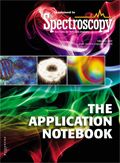US EPA SW-846 Method 6010C Using the Prodigy7 High-Dispersion ICP Introduction
Application Notebook
This application note describes the capability of the Teledyne Leeman Lab's Prodigy7 High-Dispersion ICP for performing analysis according to SW-846 Method 6010C.
This application note describes the capability of the Teledyne Leeman Lab's Prodigy7 High-Dispersion ICP for performing analysis according to SW-846 Method 6010C. This method is applicable to groundwaters, Toxicity Characteristic Leaching Procedure (TCLP) and Extraction Procedure (EP), industrial organic wastes, soils, sludge, and sediments.
As with other US EPA mandated methods, Method 6010C requires adherence to specific procedures to ensure analytical quality control.
Experimental
A Prodigy7 inductively coupled plasma (ICP) spectrometer equipped with a radial view torch and a 240-position CETAC ASX-520 autosampler was used to generate the data.
The Prodigy7 is a compact benchtop simultaneous ICP-OES system featuring a 500 mm focal length Echelle Optical System coupled with a megapixel CMOS Detector. At 28 × 28 mm, the active area of the CMOS Detector is significantly larger than any other solid-state detector currently used for ICP-OES. This combination allows Prodigy7 to achieve higher optical resolution than other solid-state detector based ICP systems. The detector also provides continuous wavelength coverage from 165 to 1100 nm permitting measurement over the entire ICP spectrum in a single reading without sacrificing wavelength range or resolution. This detector design is inherently anti-blooming and is capable of random access, nondestructive readout that results in a dynamic range of more than six orders of magnitude.
Sample Introduction
The sample introduction system consists of:
- Cyclonic spray chamber
- Seaspray™ concentric nebulizer
- Four-channel peristaltic pump
The volume of cyclonic spray chamber is low to allow for fast washout between samples, while its knockout tube or baffle, efficiently reduces the amount of sample aerosol reaching the torch.
The torch and sample introduction system are uniquely integrated into the optical system through Prodigy7's innovative Image Stabilization System, which treats the torch as an optical component by rigidly attaching it to the spectrometer.
Operating Parameters
The initial performance parameters measured for this application note were determined as specified in Method 6010C. All samples were analyzed using the Prodigy7 equipped with a radially viewed torch.
Performance Characteristics
Method 6010C requires that the upper limit of the linear dynamic range (LDR) be established. This is accomplished by analyzing increasingly higher concentration analyte standards. The LDR is considered exceeded when the measured concentration is more than 10% below the true concentration. The upper limit of the LDR must be established for each wavelength utilized by determining the signal responses from a minimum of three different concentration standards across the range. The ranges that may be used for the analysis of samples should be judged by the analyst from the resulting data. A standard at the upper limit must be prepared, analyzed, and quantitated against the normal calibration curve. The calculated value must be within 10% (±10%) of the true value.
The types of samples analyzed under the scope of Method 6010C may exhibit considerable spectral complexity. As a result, interferences due to spectral overlaps may be observed. When present and uncorrected, these interferences will produce biased determinations. For this study, checks are performed for the major matrix elements, Al, Ca, Fe, Mg, Si, and P on the other analyte elements. This is done using single element solutions. Once the interferences are identified, the Prodigy7 will automatically calculate the interfering element correction factors.
Sample Analysis Results
A certified water sample, ERA WatR™ Pollution Trace Metals, Lot P213-500, and four certified soil samples were prepared and analyzed: ERA Metals in SewageSludG™ , Lot. D078-160 (Environmental Resource Associates, Arvada, Colorado) and Standard Reference Materials (SRM) 2709, 2710, 2710 (NIST, Gaithersburg, Maryland).
Conclusion
The Prodigy7 ICP readily accommodated all of the soil samples for analysis. Examination of the data indicates the results for all elements lie well within the performance acceptance limits (PAL) for the ERA soil or the range specified for the NIST SRM soils. The results demonstrate excellent precision, as indicated by the low relative standard deviation (RSD) data, indicating the Prodigy7 is operating well above the detection limit (DL) and limit of quantitation (LOQ) for the elements determined.

For the full application note visit: http://web.teledyneleemanlabs.com/spectroscopyAN1305.

Teledyne Leeman Labs
6 Wentworth Drive , Hudson, NH 03051
tel. (603) 886-8400, fax 603-886-9141
Website: www.teledyneleemanlabs.com

Accurate Microplastics Analysis in Minutes, Not Hours
April 10th 2024The automated Agilent 8700 LDIR chemical imaging system lets you obtain high-quality images and spectral data faster than ever before. So, you can perform confident large-scale microplastics studies and monitoring activities.
Advancing Research of Plastics in the Environment Using the Agilent Cary 630 FTIR Spectrometer
April 10th 2024Plastic pollution has become a high-priority area of study in recent years due to the increasing prevalence of plastics in the environment. Currently, researchers have a limited understanding of the impact of plastic pollution on human health, how it affects wildlife and their habitats, and its long-term effects on the environment. An important step in overcoming this pressing global environmental issue is the advancement of research relating to the identification of plastic waste and microplastic particles.